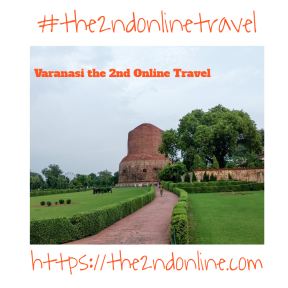Navratri Day 7th Goddess Kalratri On the seventh day of Navratri celebrations, Goddess Kalratri is worshipped. Her body is black in colour just like darkness and she has three eyes which are round shaped just like the universe. Though her appearance is fearsome but she is very auspicious. She is also considered to be very powerful. In India Kalratri Temple in Varanasi is dedicated to her. This temple is one of the Shakti peets of Varanasi. Goddess Kalratri rules Planet Rahu. The goddess has four arms and she rides on a gadarbh with donkey being her procession. Kalratri goddess has killed demons Shumbh and Nishumbh. She has 3 eyes and she exhales fire flames through her nose. Her upper right hand grants blessings and lower right hand grants protection. In her upper left hand she holds an iron thorn and her lower left hand has a dagger. Goddess Kalratri also wears a bead that glows like fire of electric power. She destroys evil and her devotees need not fear anything.Kal...
Sarnath Varanasi – the second Online , Aktha Sarnath
Sarnath has previously been known as Mrigadava, "deer park," and Isipatana, meaning the place where holy men (Pali: ISI) fell to earth. The last name is based on the legend that devas came down to announce it to 500 holy men when the Buddha was born. The holy men all rose into the air and disappeared, and their relics fell to the ground.
The current name Sarnath, from Saranganath, means "Lord of the Deer" and relates to another old Buddhist story in which the Bodhisattva is a deer and offers his life to a king instead of the doe he is planning to kill. The king is so moved that he creates the park as a sanctuary for deer.
History
After his enlightenment in Bodhgaya, the Buddha went to Sarnath seeking his five former companions. He found them, taught them what he had learned, and they also became enlightened. Thisevent is referred to as "the turning of the wheel of the Dharma" and also marks the founding of the Sangha or the community of monks.
Buddha's first discourse, delivered here at Sarnath, is known in Pali as the Dhammacakkhapavathana Sutta. Other Suttas include the Anattalakhana Sutta and the Saccavibhanga Sutta. After his enlightenment, the Buddha's central teaching centered around the Four Noble Truths (concerning the meaning of life) and the Noble Eightfold Path (concerning the right way to live).
The Buddha spent the next rainy season in Sarnath at the Mulagandhakuti vihara. The Sangha, having grown to 60 in number, the Buddha sent them out to teach the Dharma to others.
Buddhism flourished in Sarnath partly because of the support of kings and wealthy merchants based in nearby Varanasi. By the 3rd century, Sarnath had become an important center for the arts, which reached its zenith during the Gupta period (4th-6th century AD). When Hsuan Tsang visited China in the 7th century, he found 30 monasteries and 3000 monks living at Sarnath.
Sarnath became a major center of the Sammatiya school of Buddhism, one of the Nikaya or Hinayana schools. The presence of images of Heruka and Tara indicates that Vajrayana Buddhism is also practiced here.
At the end of the 12th century, Sarnath was sacked by Turkish Muslims. The site was subsequently plundered for building materials and has remained in ruins until the present day. The site was entirely deserted until 1836 when the British began excavations and restoration.
Conclusion
So, that's all about Sarnath Varanasi!We hope our readers shall surely be able to get the complete knowledge about Sarnath if they go through the above post till the end.
If you love the above post,please do like , comment and share.
For any inquiry related to Travel, please do give us a missed call at ++ 91 0 7408358005 either or drop a message using the contact form. You can also contact us through our website.

.png)




.png)
Your blog consistently delivers content that's both insightful and engaging. It's a pleasure to be a reader and learn from your expertise. also read this - Jaagriti Travel Agent in Dwarka
ReplyDeleteThank you so much!
ReplyDelete